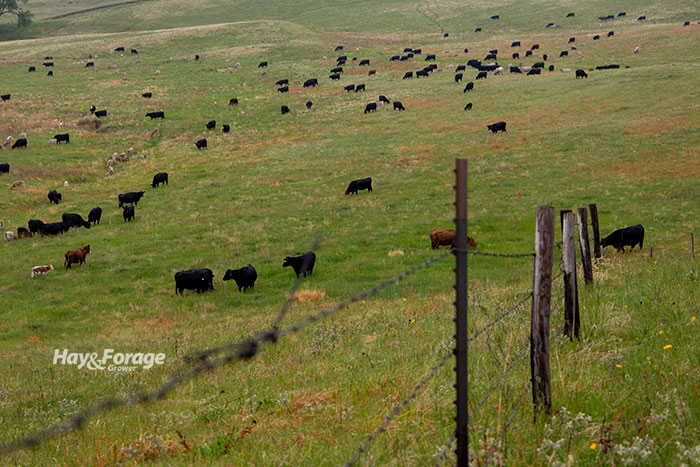
Productive acres of grasslands in the Great Plains are shrinking because of woody plant encroachment from species such as eastern redcedar. The problem has existed for many years, but good answers to stop the forestation of our nation’s grasslands have been hard to come by.
Dillon Fogarty and Dirac Twidwell, rangeland ecologists with the University of Nebraska, are proposing a new approach to rangeland management where woody species are rapidly proliferating. The practice, known as “Defend the Core, Grow the Core,” focuses on dividing the current land base into three categories: clean grasslands (core), transitional grasslands with low to moderate infestations of woody species, and areas with heavy infestations of woody species.
The ecologists recommend focusing woody species control on those areas with low to moderate infestations that border the clean grasslands. Trying to reclaim heavily infested areas is both expensive and rarely successful, according to Fogarty and Twidwell.
“Management treatments within heavily encroached areas can cost hundreds to thousands of dollars per acre and require intensive, short- and long-term follow-up management,” the ecologists explain. “In the short term, follow-up management is needed to kill the thousands of seedlings per acre that sprout after the initial treatment. Without this follow up, ranchers will quickly have a bigger problem than when they started. In the long term, constant management is needed to keep pace with seedling recruitment as seeds pour in from surrounding seed sources,” they add.
A mature eastern redcedar tree can produce over 1.5 million seeds per year, which mostly are dispersed within 200 yards of the tree. As a result, the transitional areas continue to get worse and expand into the productive grasslands.
“By anchoring management to intact grasslands and targeting the leading edge of the problem where seeds, seedlings, and scattered seed sources exist, managers can impact more acres and have a better chance for long-term success,” the ecologists assert.
Work with neighbors
Talking to neighbors about growing a grassland core across properties is also beneficial when controlling woody species. “We give encroaching woody plants an advantage when we limit our planning to the boundaries of a single property,” Fogarty and Twidwell note. “Efforts to solve the encroachment problem are more successful when neighbors collaborate and work together, including collaborations that span private and public land.”
The Nebraska rangeland experts say that there is no single correct size for building a grassland core. They suggest the goal is to maximize the size of the core based on the context of a landscape or region.
Where grassland regions are more intact, there’s potential to establish large core areas relatively quickly, while in more infested regions, smaller cores can help protect remaining grassland values. “What’s most important is that we get started defending our grassland cores — and the sooner the better,” Fogarty and Twidwell conclude.

